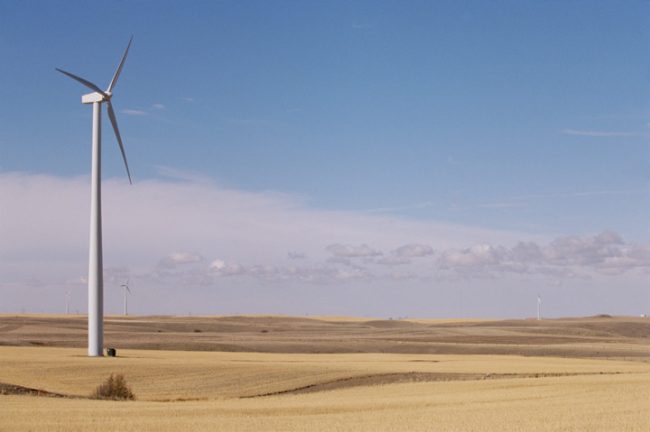
Saskatchewan rejects proposed wind farm to protect birds
by The Canadian Press

177 megawatt SaskPower site would have included up to 79 turbines, but an environmental review found potential risks to migratory birds

If built, the Chaplin project would have included up to 79 turbines as well as 110 kilometres of trenched transmission lines in the prairie province. PHOTO: CanWEA
REGINA—A proposed project that would have generated electricity from wind energy in southwestern Saskatchewan has been denied over concerns about birds.
Environment Minister Scott Moe says an environmental review of the proposal for Chaplin identified potential risks to migratory bird activity in the area.
Algonquin Power wanted to build a 177 megawatt facility on behalf of SaskPower that would have included a maximum of 79 wind turbines, 50 to 70 kilometres of access roads and 110 kilometres of trenched transmission lines.
Moe says the government will continue to work towards its goal of 50 per cent of power generation from renewable energy sources by 2030.
To that end, it has released new guidelines for proposed wind energy sites that include a five-kilometre buffer zone around environmentally sensitive area such as national and provincial parks, ecological reserves, important bird areas and key Saskatchewan rivers.
Moe says the guidelines are designed to enhance environmental protection and provide more certainty to future wind energy developments.
“By clearly identifying avoidance areas for wind energy developers, our government is demonstrating our commitment to make decisions that balance environmental responsibility with economic needs,” Moe said in a release Sept. 19.
Proponents will still be required to evaluate proposed sites outside the buffer zone for potential impacts on the environment and wildlife.
The guidelines were developed with industry and environmental stakeholders, Moe said.
The Chaplin proposal was the first wind electricity project to undergo an environmental impact assessment. Moe said the experience helped in the development of the guidelines for future wind and other renewable energy generation projects.